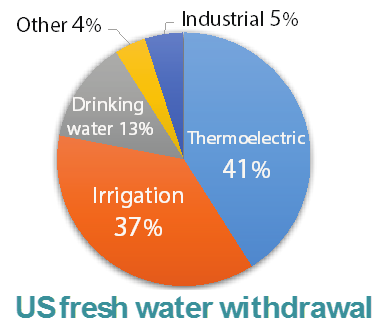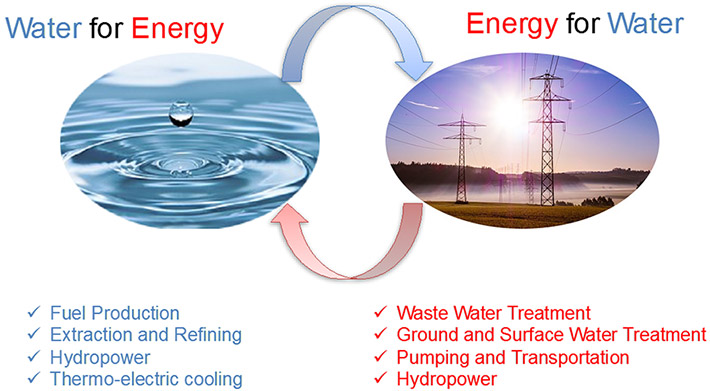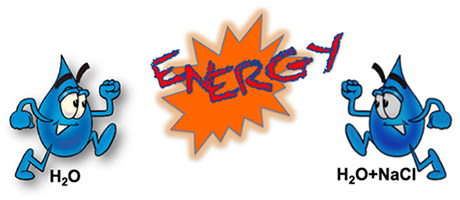Importance of water … I’m dying of thirst!
H2O – two hydrogens and one oxygen. Seems simple but water is the most vital material for life and our body has a specific drought management system to prevent dehydration to ensure our survival.
Water makes up around two thirds of our body weight, and without water, we would die in a few days. Our body uses water in all its cells and organs. For example, human brain is made up of 83% water, blood is 94% and lungs 85%. Even less than 2% drop in our body’s water supply can cause signs of dehydration: fuzzy short-term memory, problem with basic math, and difficulty focusing on smaller objects, such as a computer screen. Around 75% of Americans have mild, chronic dehydration. Pretty horrifying, for a developed country with fully accessible water supplies through the tap or bottle water. The body cannot work without water, just like a car which cannot run without gasoline. In fact, all the cell and organ functions that make up our entire anatomy and physiology depend on water for their functioning.
Access to drinking water … an increasing demand.
Every year in rural areas and poor urban communities hundreds millions of people suffer from a lack of access to drinkable and safe water. Women and girls especially walking several miles at a time to gather water from streams and ponds – full of water-borne disease that is making them and their families sick.
- 85% of the world population lives in the driest half of the planet.
- 768 million people do not have access to clean water.
- Almost 2.5 billion do not have access to adequate sanitation.
- 6 to 8 million people die annually from the consequences of water-related diseases.
Water is not just for drinking
In daily human life, water is essential not only for drinking but also for multiple demands such as agriculture and energy production. Agriculture uses approximately 70% of the world’s freshwater supply. Agricultural water use have come under growing pressure due to increase of the human population and groundwater overdraft.
Also, water plays a number of important roles in energy production, including pumping crude oil out of the ground, generating steam for turning turbines and generation of electricity, flushing away of burnt fuel residue, and cooling power plants. For example, coal power plants consume more than 500 billion L of fresh water per day in the United States alone that translates to around 100 L of water to produce 1 kilowatt-hour of electricity. A more sensible example is keeping a single 60-watt lightbulb on for 12 hours uses as much as 60 liters of water.

Energy for water …. Water for Energy
Water and energy are linked and interconnected. Energy generation depends on water and energy is also essential for providing freshwater, needed for transportation, distribution, treatment and end-use water applications. Each resource faces rising demands and constraints in many regions because of economic and population growth and climate changes, which will amplify their effect to one another.

Membrane-based processes … a critical role at the water-energy nexus
Membrane-based processes play an important role in technologies for desalination and water purification, as well as emerging technologies for sustainable power generation from natural salinity gradients and waste heat. Therefore, membrane technologies have great potential to answer the demands at water-energy nexus.
One of these technologies is reverse osmosis, which is being used extensively for seawater desalination. Reverse Osmosis is a process that is applied to extract a large majority of contaminants and solutes like salt from water by pushing the water under pressure through a semi-permeable membrane. Reverse osmosis is the process of osmosis in reverse. Whereas osmosis occurs naturally without any energy requirements, to reverse the process of osmosis we need to apply energy to the more saline solution. A reverse osmosis membrane is a filter that allows water molecules to pass whilst preventing majority of dissolved salts, organics, bacteria and pyrogens to go through. However, we need to spend energy and ‘push’ the water through the reverse osmosis membrane by applying pressure that is greater than the naturally occurring osmotic pressure in order to desalinate (demineralize or deionize) water in the process.
Another emerging membrane-based process for generating sustainable power from salinity gradients in pressure retarded osmosis (PRO). In reverse osmosis membrane process, we need to put energy, electricity, to produce fresh water and in PRO we need to just contact and mix waters with different concentrations, salinities, to produce energy. A great quantity of renewable energy can be potentially generated when waters of different salinities are mixed together.

Through natural osmosis process, water from the less-salty stream would cross the membrane to a pre-pressurized saltier side, creating a high pressure flow that can be sent to turn a turbine to harvest power. When fresh water flows to the sea water, enormous quantity of energy will release. Travelled fresh water through the membrane will increase the pressure of salt water side corresponding to lifting the water around 270 m. Approximately 0.70 – 0.75 kWh (2.5 – 2.7 MJ) is dissipated when 1 m3 of fresh water flows into the sea, meaning that 1 m3s -1 of fresh water can potentially generate 2.5-2.7 MW. Considering the average discharge of all the world’s rivers into the ocean, the global potential for osmotic power is reported to be 1,650 TWh y-1. This is equivalent to about half the current annual hydropower generation.







